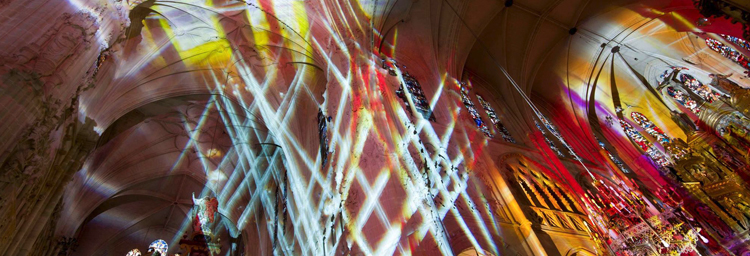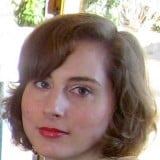What are Chromotopia?
Victoria Coeln is a Vienna-based artist best known for her large-scale, immersive light interventions that she calls “Chromotopia.” Derived from the Greek chroma/color and topos/place, Chromotopia are multi-layered light surfaces that are experienced as a three-dimensional phenomenon in public – often historic – spaces.
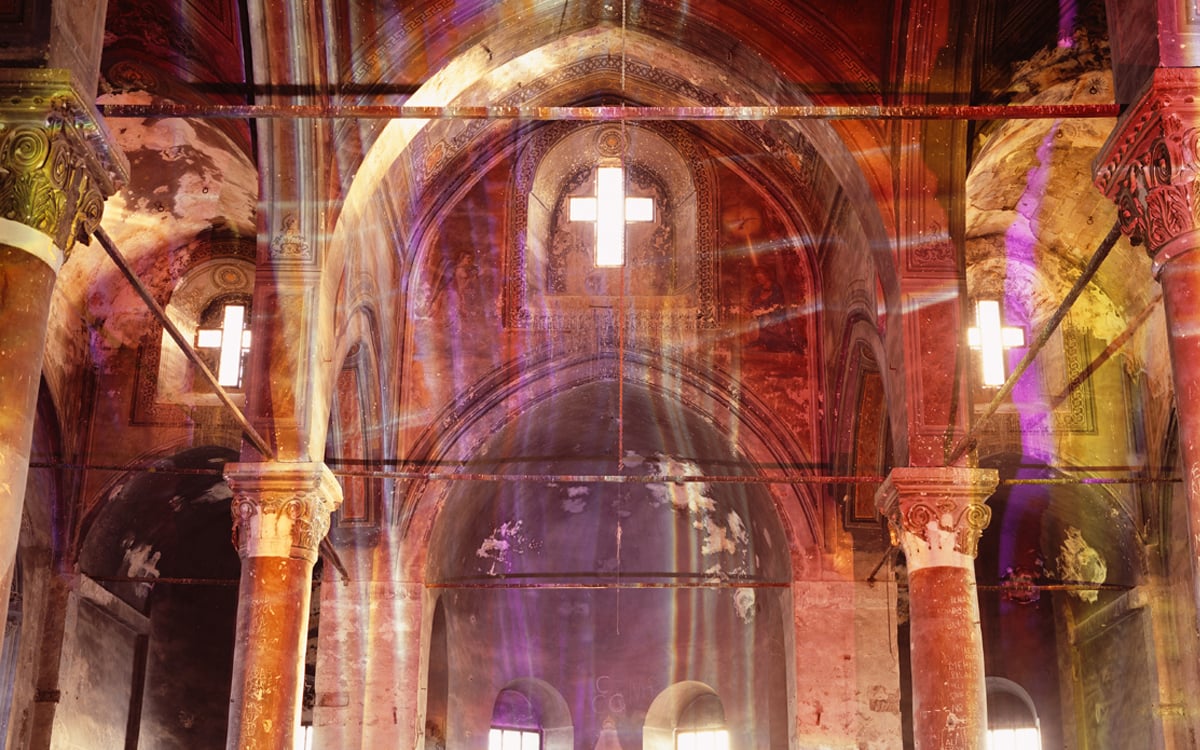 Cappadocia: CHROMOTOPIA DERINKUYU | TR 2015
Cappadocia: CHROMOTOPIA DERINKUYU | TR 2015
Using either the natural, available sunlight and/or projectors, Coeln develops her work on-site using a variety of color filters to shed a new light on the chosen areas in vibrant hues and textures that enrich the space and engage it with its past.
Video showcasing the Chromotopia installed inside Saint Stephen’s Cathedral in Vienna
Victoria Coeln’s Chromotopia have been installed in a variety of UNESCO World Heritage sites, such as Saint Stephen’s Cathedral in Vienna as well as Ephesus, Cappadocia, and Göbekli Tepe in Turkey. To her, Chromotopia represent the connection between historic and contemporary space.
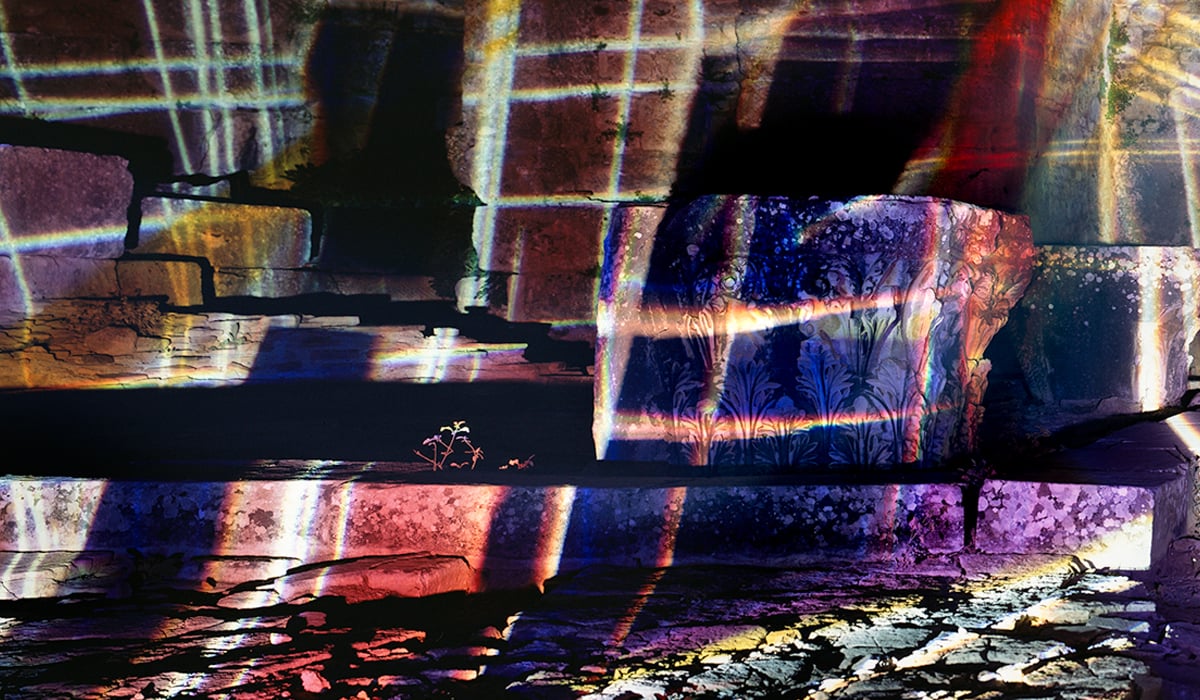 Ephesus: CHROMOTOPIA SERAPEION | Selçuk TR 2015
Ephesus: CHROMOTOPIA SERAPEION | Selçuk TR 2015
Victoria Coeln describes Chromotopia as “laboratories of vision and an instrument of insight. They result from the merging of current scientific knowledge about the phenomenon of light with ancient knowledge of mysticism and spirituality.”
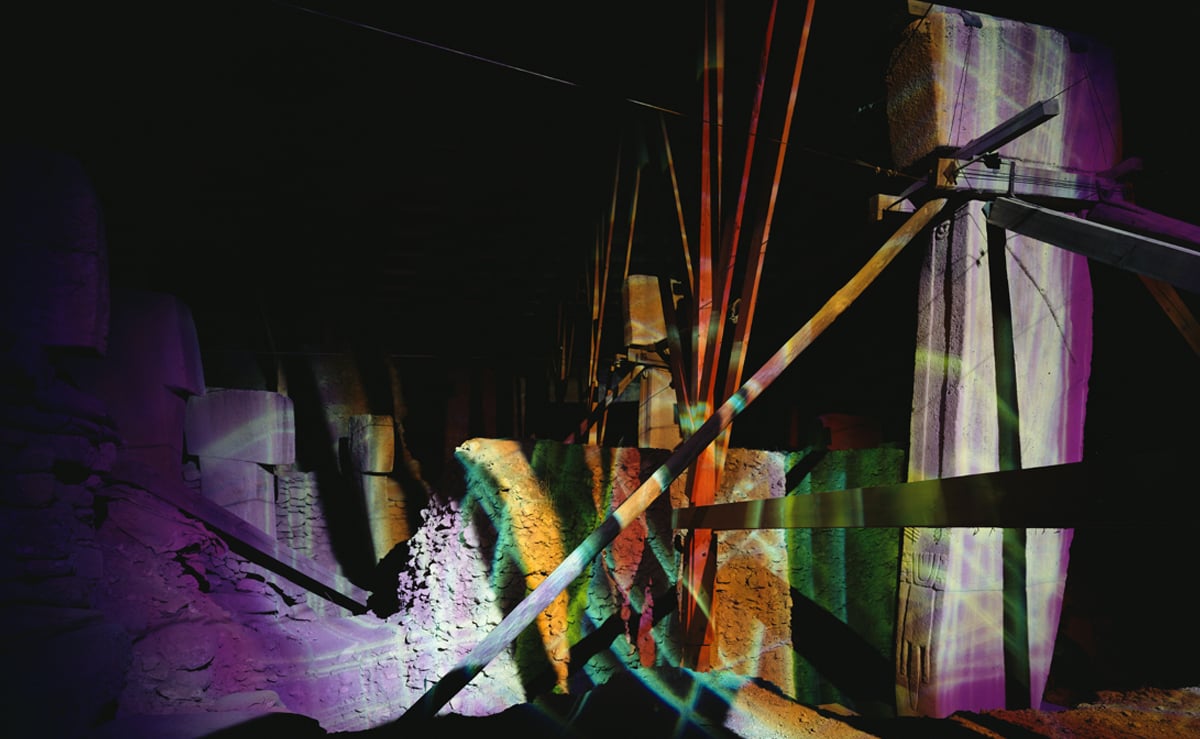 Şanliurfa: CHROMOTOPIA GÖBEKLI TEPE | TR 2015
Şanliurfa: CHROMOTOPIA GÖBEKLI TEPE | TR 2015
Work In Process: Chromotopia Santa Maria
Chromotopia Santa Maria is Victoria Coeln’s most recent Chromotopia exhibited inside The Cathedral of Saint Mary in Burgos, Spain – a UNESCO World Heritage site.
To create her light interventions, Coeln assembles her own customized glass filters that she calls “Diachromes” - a set of multi-layered Rosco Permacolor Dichroic Glass Filters that she etches, scratches and assembles on-site.
 Victoria Coeln working on site on her Diachromes
Victoria Coeln working on site on her Diachromes
Victoria considers the non-visibility of light and matter a very important part of her work. “Light itself is invisible to the human eye, as long as it does not touch upon matter. At the same time, the material world would not be visible without light. Only at the very moment when these two non-visible elements are superimposed do both become visible together. This miracle – as ingenious as it is simple – is the point of departure for my work. Viewed from this perspective, shaping the light is as important as shaping the material, for both only coexist in interrelation.”
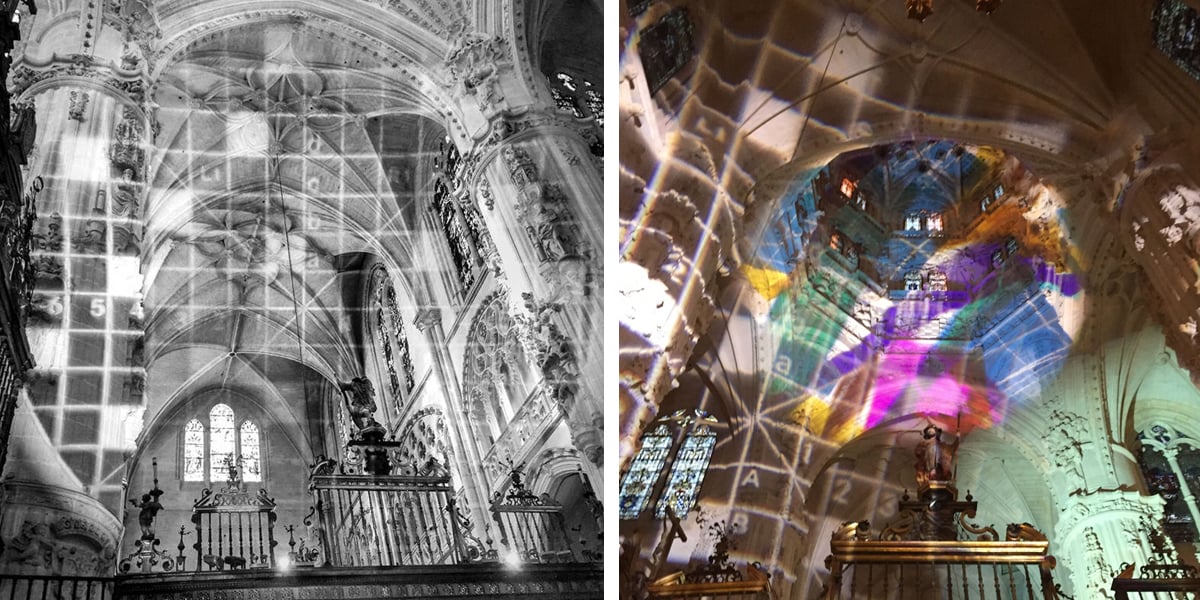 Work in process showing Coeln’s grid & colour tests
Work in process showing Coeln’s grid & colour tests
Victoria studied the architecture of the historic Burgos Cathedral to create a polychrome light space that she superimposed on the gothic structure. She merged the light that entered through its stained glass windows with her Diachromes. This combination highlighted the beauty of the construction and drew attention to certain architectural elements on the lantern tower, the main altar and the staircase inside the cathedral. To project her Diachromes inside the Burgos Cathedral, Victoria installed them inside six HMI projectors outfitted with 25-50º zoom barrels.
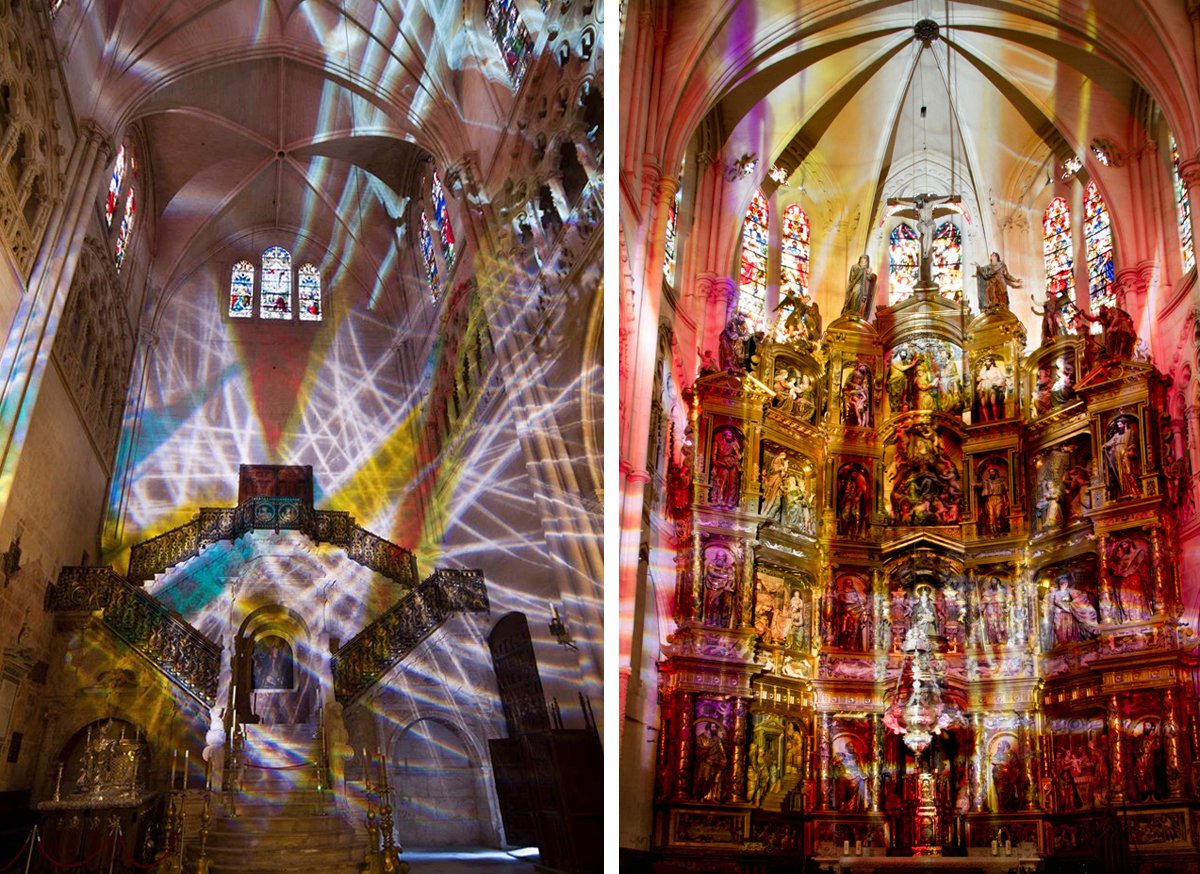 The staircase and altar of the Burgos Cathedral bathed in Coeln’s Chromotopia
The staircase and altar of the Burgos Cathedral bathed in Coeln’s Chromotopia
Chromotopia Santa Maria not only highlights the architectural beauty of the space, it also reveals a deeper, darker side of the Burgos Cathedral’s history. Victoria comments: “Standing in the center of the cathedral, in front of this huge altar with all its details, mirroring the painful experiences of life, you begin to understand history and present in a quite different, much more intense way. The question for me was how to transfer this intensity into visibility referring to the deep medieval red of the historic window. My answer to that question was a blend of Rosco 6100 Flame Red, a dichroic match to E027 Medium Red and 3114 Victorian Gold.“ By projecting those colors, Victoria brought the bloody part of the Cathedral’s history – its suffering and its pain – directly into the huge, golden, baroque altar. All of this becomes more obvious when experiencing the Chromotopia live, as photographs do not convey the power of the intervention that you feel when walking through it.
Providing Solutions While Building Friendships
Coeln has been working with Rosco – specifically with Anne Hunter, Rosco’s Gobo and Permacolor product manager – for the past ten years. “Ohh we could celebrate an anniversary, Anne and me,” Victoria says with a smile.
A TEDx video that explores Victoria Coeln’s Chromotopia Process
Anne finds Victoria’s work and use of dichroics “fascinating and unique.” In fact, at one point Victoria visited Rosco’s gobo and dichroic facility in Texas. During the visit, she and Anne discussed her requirements for color and Anne discovered that Victoria uses color palettes similar to those used by painters to make her designs come to light. The result of the conversation was the development of Permacolor #3114 Victorian Gold – named for Victoria Coeln – and Permacolor #1050 Mauve. The filters were designed to represent the Ochre and Carmine pigments found on a painter’s palette, both of which are difficult to achieve with light.
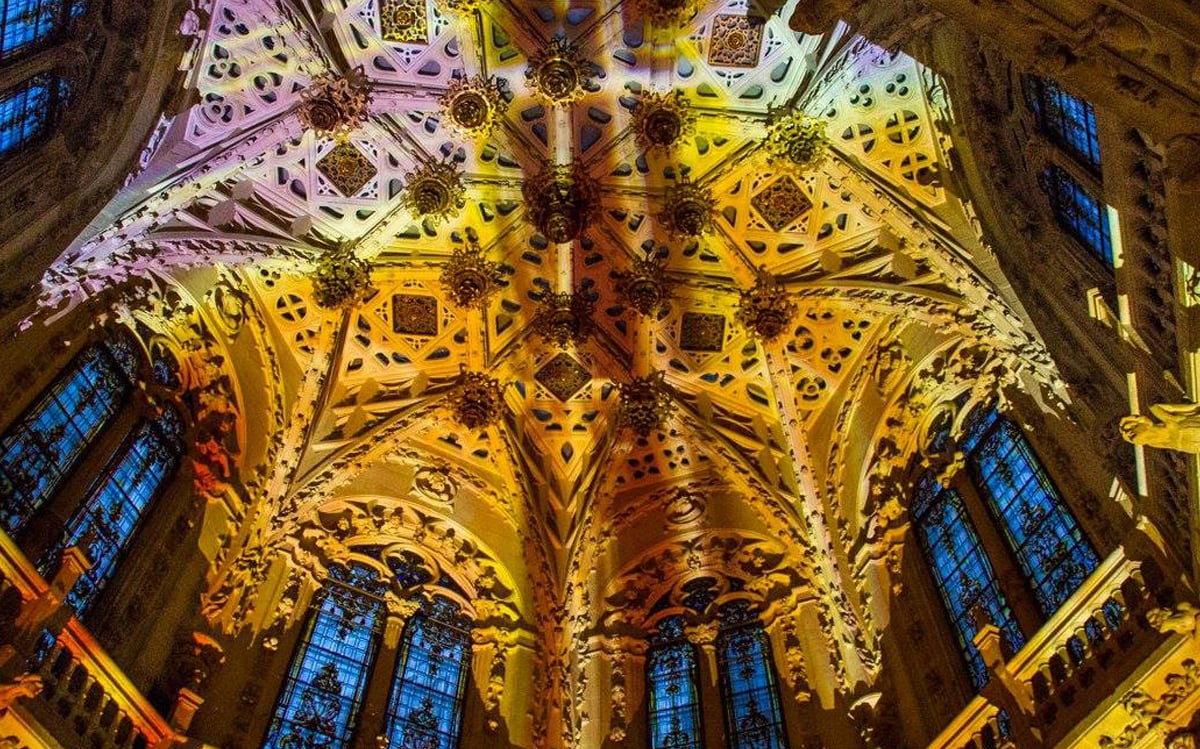 The lantern tower of the Burgos Cathedral bathed in Permacolor Victorian Gold & Mauve
The lantern tower of the Burgos Cathedral bathed in Permacolor Victorian Gold & Mauve
Victoria laughs as she adds: “There is a saying among the lighting designer community that if Rosco names a filter after you, then you have made it!”
The fruitful relationship between Victoria and Anne is one of many examples that demonstrate Rosco’s commitment to providing solutions for creative people to achieve their visions. Make sure to visit Victoria Coeln’s website to learn more about her fascinating work: www.coeln.at. You can also explore our Permacolor web page to learn more about the product Victoria Coeln uses to create her fascinating Chromotopia.
All images and dichroic Diachrome designs © Victoria Coeln
Save
Save

